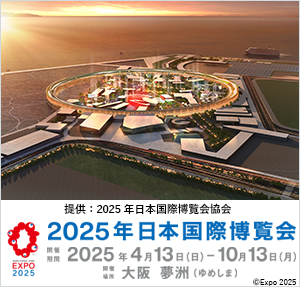Huawei Strives to Build industry Intelligent Twins with Intelligent Connectivity
PR85791
SHANGHAI, Sept. 24, 2020 /PRNewswire=KYODO JBN/ --
At HUAWEI CONNECT 2020, Huawei announced its all-scenario intelligent
connectivity solutions for technology, network, and industry scenarios.
These solutions will help Huawei deliver intelligent connectivity that is
characterized by ubiquitous gigabit, deterministic experience, and hyper-automation
in order to build industry Intelligent Twins. Huawei also launched autonomous
driving network (ADN) solutions for enterprises, propelling enterprise networks
into the ADN era and accelerating the intelligent upgrades of industries.
David Wang, Huawei Executive Director and Chairman of the Investment Review
Board, delivered a keynote speech titled "Building industry Intelligent Twins
with intelligent connectivity." According to Mr. Wang, connectivity is productivity.
It is not mere computing power, but strong connectivity that makes Intelligent Twins smarter.
Huawei believes that ubiquitous gigabit, deterministic experience, and
hyper-automation are the three major characteristics of intelligent connectivity.
Photo - https://photos.prnasia.com/prnh/20200924/2927780-1
Caption: David Wang, Huawei Executive Director and Chairman of the Investment
Review Board, announces all-scenario intelligent connectivity solutions
Intelligent Twins raise five new requirements for connectivity
The four key components of Intelligent Twins are intelligent interactions,
intelligent connectivity, intelligent applications, and the intelligent hub.
Among these, intelligent connectivity is like the body of Intelligent Twins.
What new requirements do Intelligent Twins place on intelligent connectivity?
There are three types of connectivity scenarios for Intelligent Twins. One is
connectivity within the intelligent hub, such as the connection of AI cluster
servers and cloud data centers. The second is connectivity between the
intelligent hub and intelligent interaction devices; connecting the "brain" and
the "limbs", so to speak. The last type is connectivity between intelligent interaction
devices, such as the connection of AI cameras, 4K drones, and robotic arms.
Overall, Intelligent Twins have five major requirements for connectivity:
High reliability, zero packet loss, differentiated services, real-time high
bandwidth, and smart O&M.
To meet the connectivity needs of Intelligent Twins, Huawei defined the three
major characteristics of intelligent connectivity:
The first is ubiquitous gigabit. Bandwidth is the basis of connectivity. The
wide application of AI cameras, drones, industrial cameras, and industrial
VR/AR services has made ubiquitous gigabit connectivity essential.
The second is deterministic experience. Connectivity for Intelligent Twins
mainly targets things and diverse production scenarios. For example, during
peak times in 2019, there was one aircraft departing or arriving at Shenzhen
Airport every less than one minute, making it essential to guarantee real-time
networking. In another example, electric power companies must assure "six
nines", or even higher reliability, and less than two minutes of power outage
per household per year. Therefore, deterministic connectivity is vital to the
security and reliability of enterprise services.
The third is hyper-automation. As industries become intelligent, the service
types as well as scale and complexity of networks will multiply, making network
O&M more difficult. The application of big data and AI will transform traditional
and semi-automated O&M into hyper-automated O&M, and leave all these
complexities to be handled by digital intelligence.
Huawei's all-scenario intelligent connectivity solutions
In terms of technology, Huawei's all-scenario intelligent connectivity
solutions will provide ubiquitous gigabit and low latency connectivity for
intelligent interaction devices, and apply AI to achieve deterministic network
experience and hyper-automated O&M. In terms of networks, these solutions will
provide Intelligent Twins with campus, data center, WAN, and security networks.
As for industries, intelligent connectivity will be combined with intelligent
interactions, the intelligent hub, and industry know-how to build
scenario-specific, intelligent solutions for industries.
- 5G intelligent connectivity: Gigabit uplink speed, 20ms latency, and
submeter-level location
To support the intelligent upgrade of industries, Huawei will continue
enhancing its 5G intelligent connectivity capabilities in terms of uplink
bandwidth, latency, and location accuracy. For example, in the smart
manufacturing domain, Huawei used its Super Uplink technology to provide
gigabit uplink speeds for HD video uploads. For scenarios that require remote
operation and control, such as ports, Huawei's 5G intelligent connectivity
technology has introduced features such as pre-scheduling and mini-slot to
reduce latency to 20ms and replace 90% of manual labor with automated
operations. Thanks to UTDOA and higher bandwidth, Huawei's 5G intelligent
connectivity can support submeter-level location accuracy for smart manufacturing,
enhancing the efficiency of production and management at industrial parks.
- Intelligent IP networks: High bandwidth and lossless for all services
Based on a three-layer AI architecture comprised of network elements, networks,
and clouds, Huawei's intelligent IP networks facilitate the upgrade of campus,
WAN, and data center networks to Version 2.0.
Huawei's CloudCampus 2.0 solution takes campus networks into the gigabit era,
providing any application with gigabit connectivity via any device and allowing
the intelligent scheduling of network resources. The CloudWAN 2.0 solution
brings intelligence to WAN networks. With CloudWAN 2.0, synergy can be achieved
between clouds and networks, meeting the needs for differentiated services.
CloudFabric 2.0 enables zero packet loss in data center networks and increases
both AI compute and storage efficiency by over 30%, helping data center
networks become intelligent.
- F5G intelligent all-optical networks: High bandwidth interconnection and flexible pipes
Huawei has proposed the all-optical network strategy for the F5G era, and
launched three intelligent all-optical network solutions.
The first is the Campus OptiX solution. Campus OptiX offers high bandwidth
access to meet campus needs for new services such as 4K cameras and VR/AR.
The second is Single OptiX. This solution can meet transmission needs at
different rates while greatly increasing efficiency.
The third is DC OptiX. IT staff can deploy DC OptiX with just one click, making
it a plug-and-play solution for enterprise scenarios.
Through this strategy, Huawei is committed to extending optical connectivity to
the network edge, and bringing the ultimate service experience to every person,
home and organization.
Huawei's ADN solutions target enterprises
Huawei's ADN solutions bring intelligence to networks. By integrating AI into
network elements, networks, and clouds, Huawei's ADN networks are
self-organizing, self-healing, and self-optimizing. These solutions will make
digital industry services and hyper-automated operations a reality.
Network elements + AI: AI is applied to upgrade traditional network elements
into digital, intelligent network elements, allowing for more agile data
sensing and processing of every network element.
Network + AI: Huawei uses AI to redefine network management. The intelligent
management and control system helps build network digital twins, and enables
the dynamic control and closed-loop management of networks, such as automatic
deployment, pre-event simulation, post-event verification, prediction and
prevention, and proactive optimization.
Cloud + AI: Huawei provides cloud-based AI training and model services for
networks, and continues upgrading the software systems and AI models that are
already embedded into its equipment and networks. This constantly improves
autonomous driving networks and makes networks smarter.
Huawei's customers from Shenzhen Airport, China Southern Power Grid, and SPD
Bank shared the application of Huawei intelligent connectivity across the
transportation, electricity, and finance sectors.
Mr. Wang concluded his speech by saying: "Over the past 40 years, Huawei has
worked with all stakeholders to connect the unconnected and build a fully
connected world. Over the next 40 years, we are committed to building industry
Intelligent Twins with intelligent connectivity."
HUAWEI CONNECT 2020 is an annual flagship event hosted by Huawei for the global
ICT industry, and is being held in Shanghai from September 23 to 26, 2020.
HUAWEI CONNECT is an open platform designed to help our customers and partners
navigate these changes, share experience, and work together to create new
value. At this year's event, we will explore trends and opportunities in
industry digitization; showcase advanced ICT technologies, products, and
solutions; give you an insider's look at the fruits of joint innovation; and
share best practices in digital transformation. Our ultimate goal is to build
an open and sound industry ecosystem that will benefit all stakeholders and
create new value for all industries. For more information, please visit:
https://www.huawei.com/en/events/huaweiconnect2020/
Source: Huawei
Image Attachments Links:
Link: http://asianetnews.net/view-attachment?attach-id=372511
Caption: David Wang, Huawei Executive Director and Chairman of the Investment Review
Board, announces all-scenario intelligent connectivity solutions
本プレスリリースは発表元が入力した原稿をそのまま掲載しております。また、プレスリリースへのお問い合わせは発表元に直接お願いいたします。
このプレスリリースには、報道機関向けの情報があります。
プレス会員登録を行うと、広報担当者の連絡先や、イベント・記者会見の情報など、報道機関だけに公開する情報が閲覧できるようになります。










